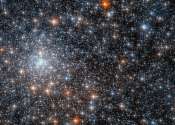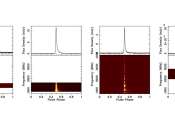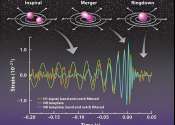New species of tyrannosaurid dinosaur identified in China
A team of paleontologists at the Zhejiang Museum of Natural History in China reports a new species of tyrannosaurid dinosaur. Their find is published in the journal Scientific Reports.

A team of paleontologists at the Zhejiang Museum of Natural History in China reports a new species of tyrannosaurid dinosaur. Their find is published in the journal Scientific Reports.

A small team of speech specialists and psychologists from Sweden, the U.K. and Switzerland has found, via study of old videos, that at least three chimpanzees had learned to speak human words, suggesting that the animals ...

Using the Gemini Observatory and the Hubble Space Telescope (HST), an international team of astronomers has investigated a Galactic globular cluster known as NGC 6558. Results of the new study, published July 22 on the pre-print ...

This week, we reported on new epigenetic findings in memory formation as well as a dramatic spike in micromobility-related head injuries, so there's a whole lot of head-related science on the front burner these days. There ...

When an object hits a body of water vertically, it is accompanied by a strong hydrodynamic force fueled by the flow of water around it, which propels it forward. The magnitude of this force is known to vary depending on the ...

In recent years, physicists and engineers have developed increasingly sophisticated instruments to study particles and the interactions between them with high precision. These instruments, which include particle detectors, ...

Astronomers from the Max Planck Institute for Radio Astronomy (MPIfRA) in Bonn, Germany and elsewhere have inspected a recycled pulsar known as PSR J1227−6208. The new study, published July 18 on the preprint server arXiv, ...

A pair of paleobiologists at the University of Fribourg and Swiss Institute of Bioinformatics, in Switzerland, working with a colleague from Museo Nacional de Ciencias Naturales, in Spain, has found evidence suggesting that ...

Starting with the direct detection of gravitational waves in 2015, scientists have relied on a bit of a kludge: they can only detect those waves that match theoretical predictions, which is rather the opposite way that science ...

A team of geoscientists affiliated with several institutions in the U.S. and Switzerland has more precisely dated an enormous "magmatic event" that occurred on the moon several billion years ago.





